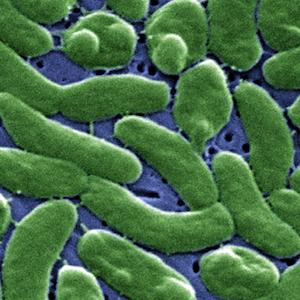The quick and frightening death of a man who contracted a kind of flesh-eating bacterium after cleaning crab pots has made national headlines. As is often the case, the man had a cut on his leg, through which the bacteria entered his body and ravaged his flesh. Even though doctors resorted to radical measures to save him, including amputating his leg, the bacteria still invaded his bloodstream and killed him merely four days after he was infected.
Understandably, the public wants to know what causes such a terrifying illness and what, if anything, can be done to prevent it. The media is not helping.
In this particular case, the bacterium that caused the man's untimely demise was identified as Vibrio vulnificus, which is typically found in coastal waters and is most commonly associated with food poisoning due to eating raw seafood such as oysters. But it can also cause deadly septicemia (i.e., blood infections).
If you relied solely upon the Washington Post's report, you could be forgiven for thinking that the primary culprit for this disease is climate change. Roughly 1/3 of the article was dedicated to a study that linked warming ocean water to the spread of vibrio bacteria.
While that may be true, it is also almost entirely irrelevant. According to the International Journal of Infectious Diseases, "V. vulnificus is usually found worldwide in coastal or estuarine environments with water temperatures from 9 to 31 °C.," but prefers "water temperatures in excess of 18 °C." While climate change may slightly exacerbate the problem, the fact remains that V. vulnificus already inhabits much of the planet.
Consequently, thousands of people probably come into contact with V. vulnificus every single day, yet few people get sick and die. Why? Again, according to the aforementioned journal: "Most reported cases of infection with V. vulnificus have occurred in patients with chronic liver disease, immunodeficiencies, or hematological disorders characterized by elevated iron levels."
The CDC puts it into perspective:
If you're healthy, have a strong immune system, and practice good hygiene and proper wound care, your chances of getting necrotizing fasciitis ("flesh-eating" bacteria) are extremely low.
Let's take a step back and compare the real story to the one told by the Washington Post.
WaPo's story: A man was infected by a dangerous bacterium that is spreading around the planet because of man-made global warming.
Real story: A man, probably with an underlying medical condition, was tragically killed by a relatively common bacterium that is naturally found all over Earth. Like being struck by lightning, he was in the wrong place at the wrong time.
The real story is far less interesting than WaPo's story, but it does have the distinction of being true.




